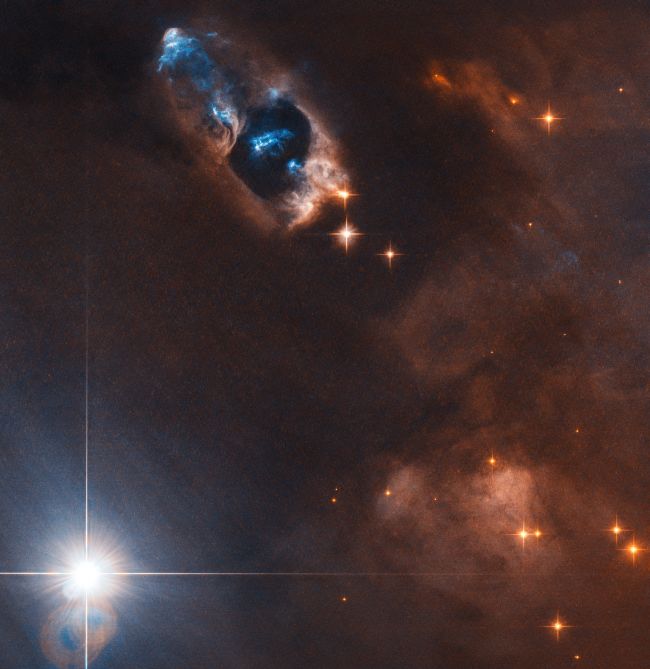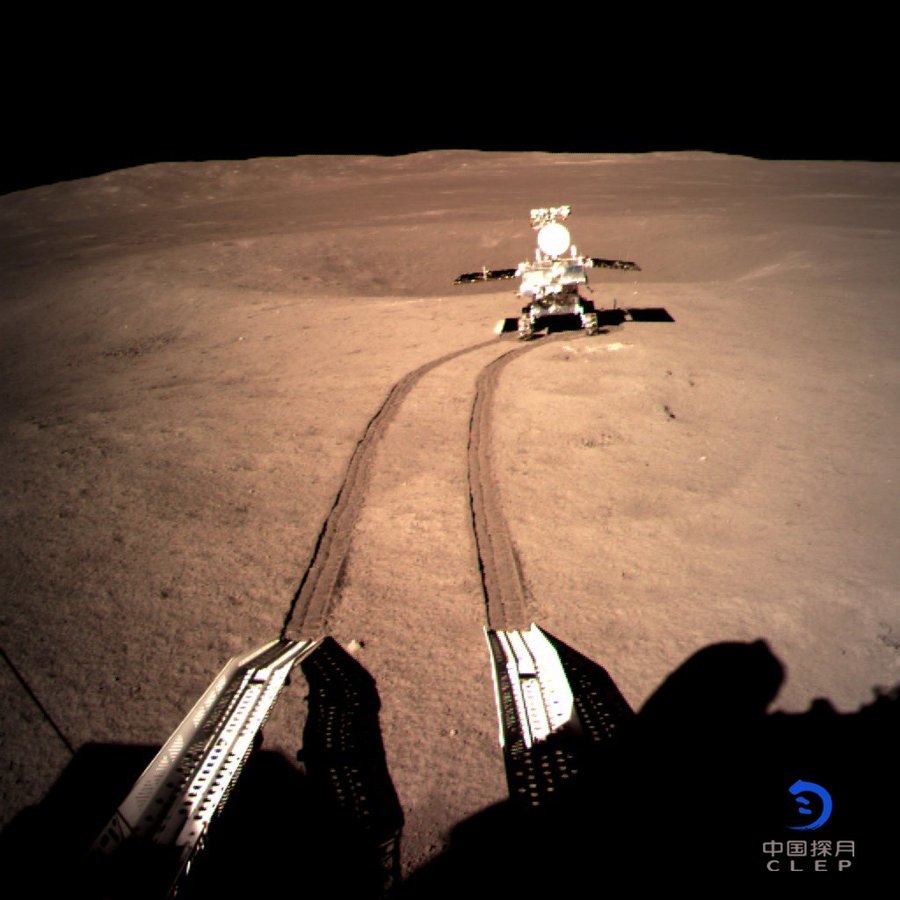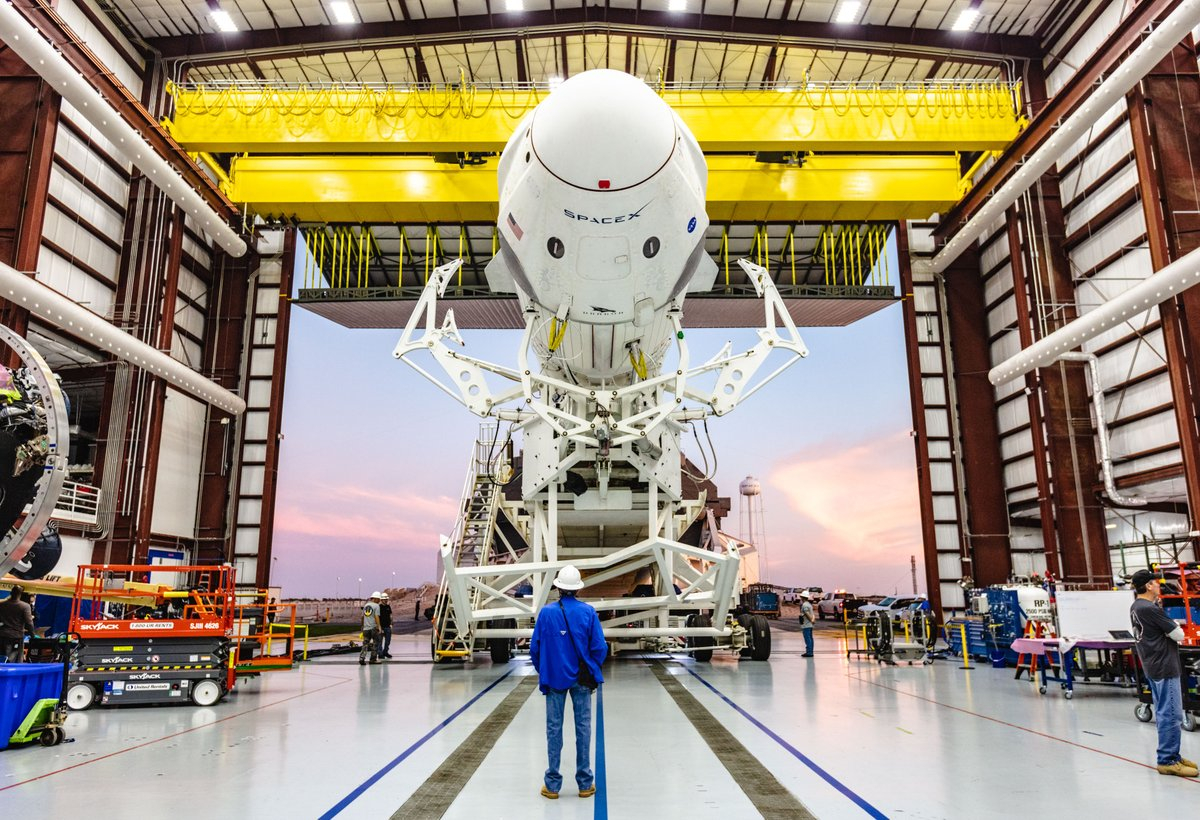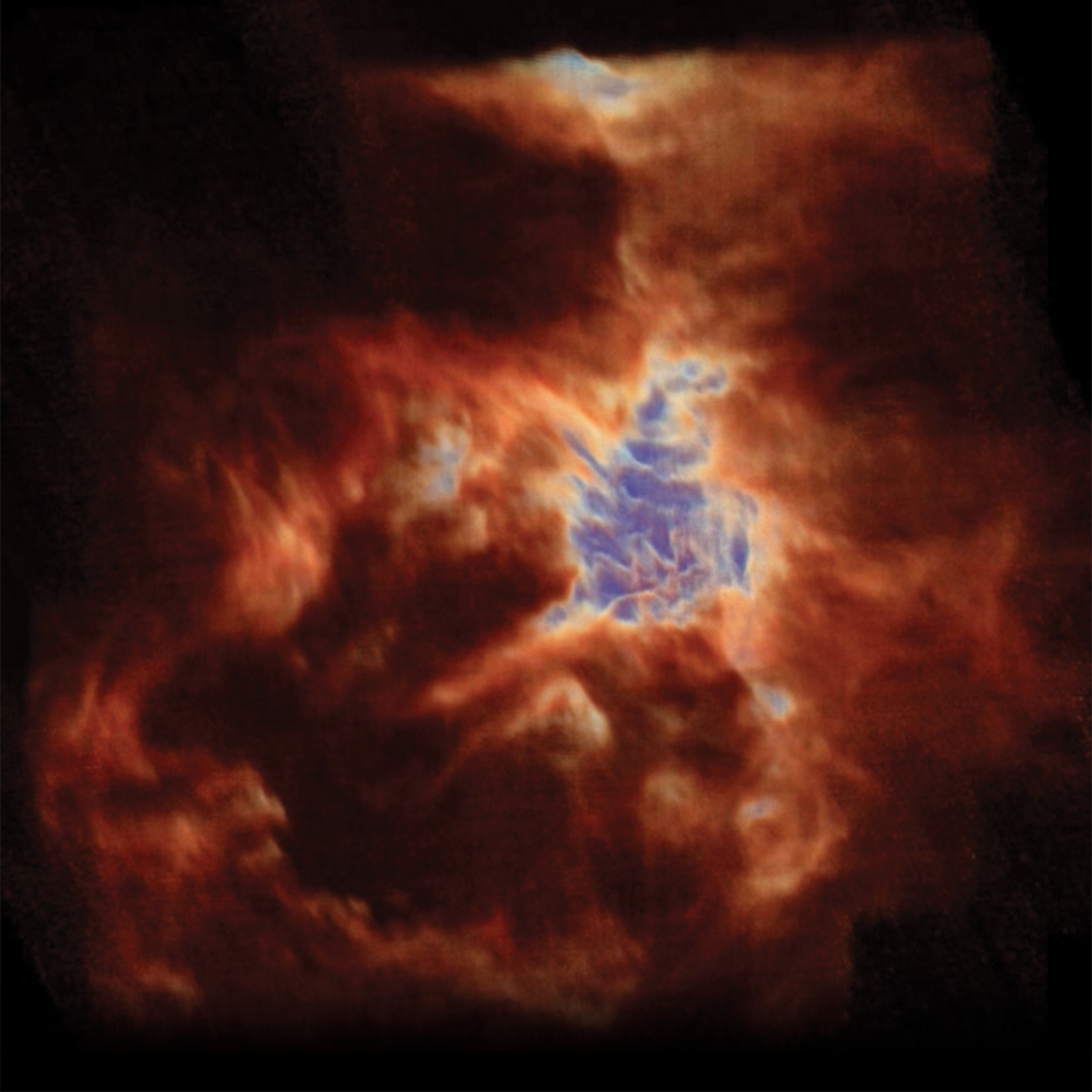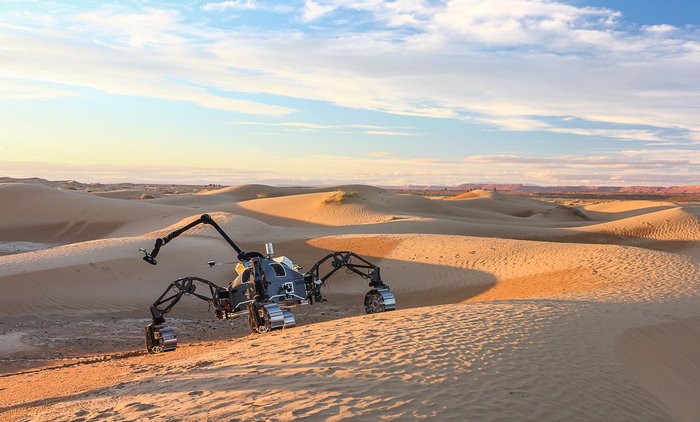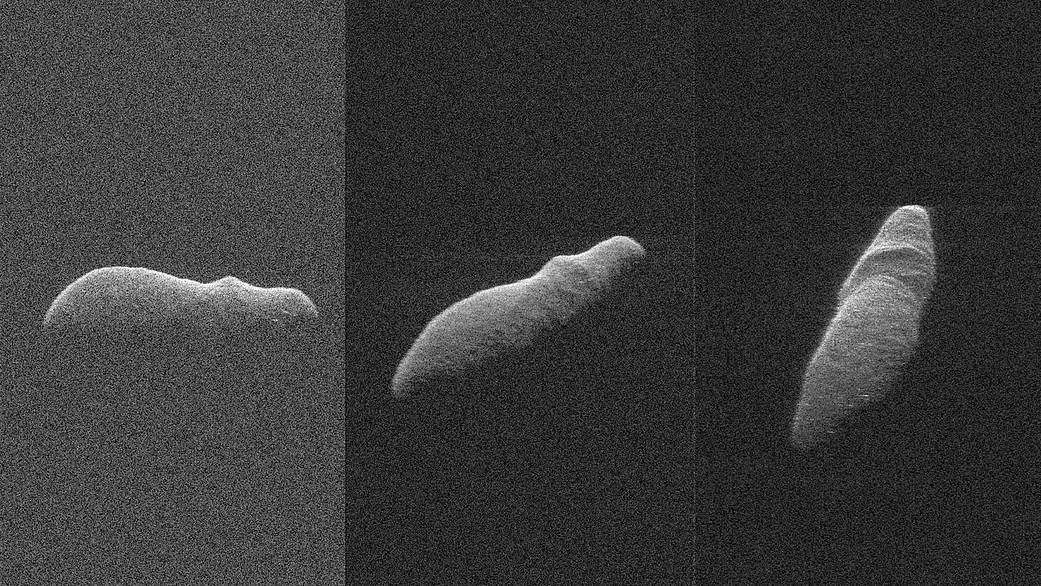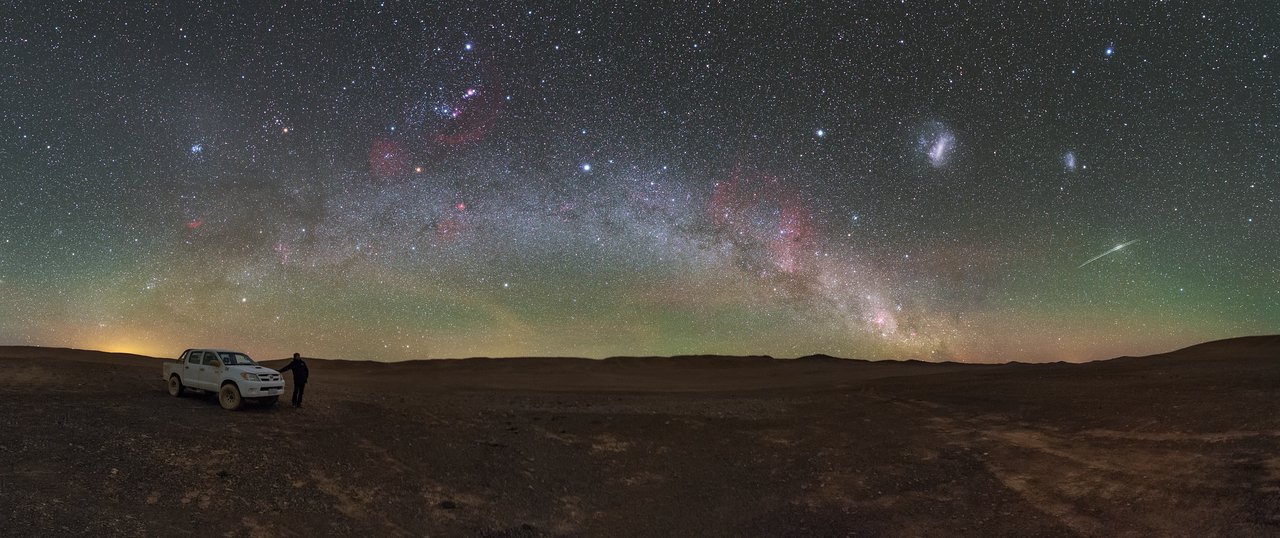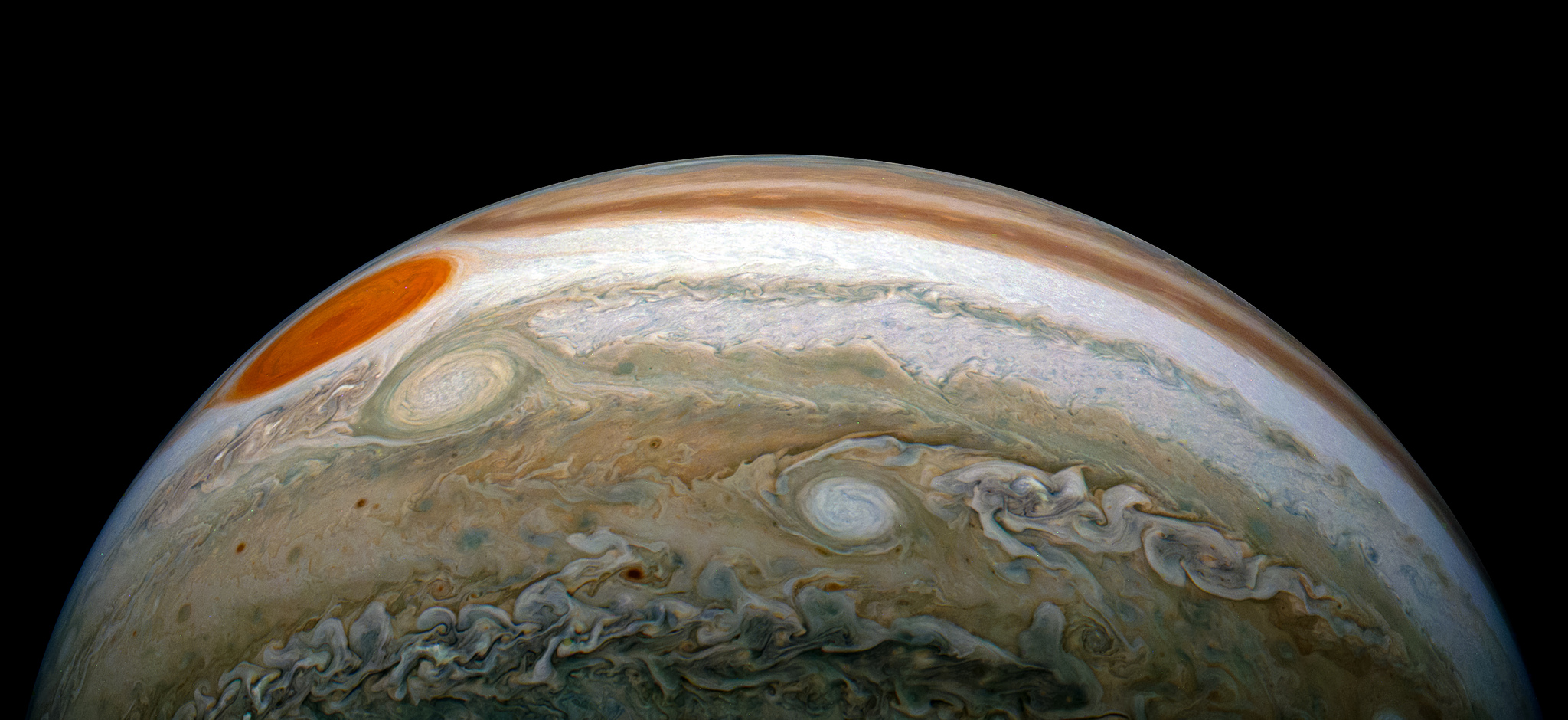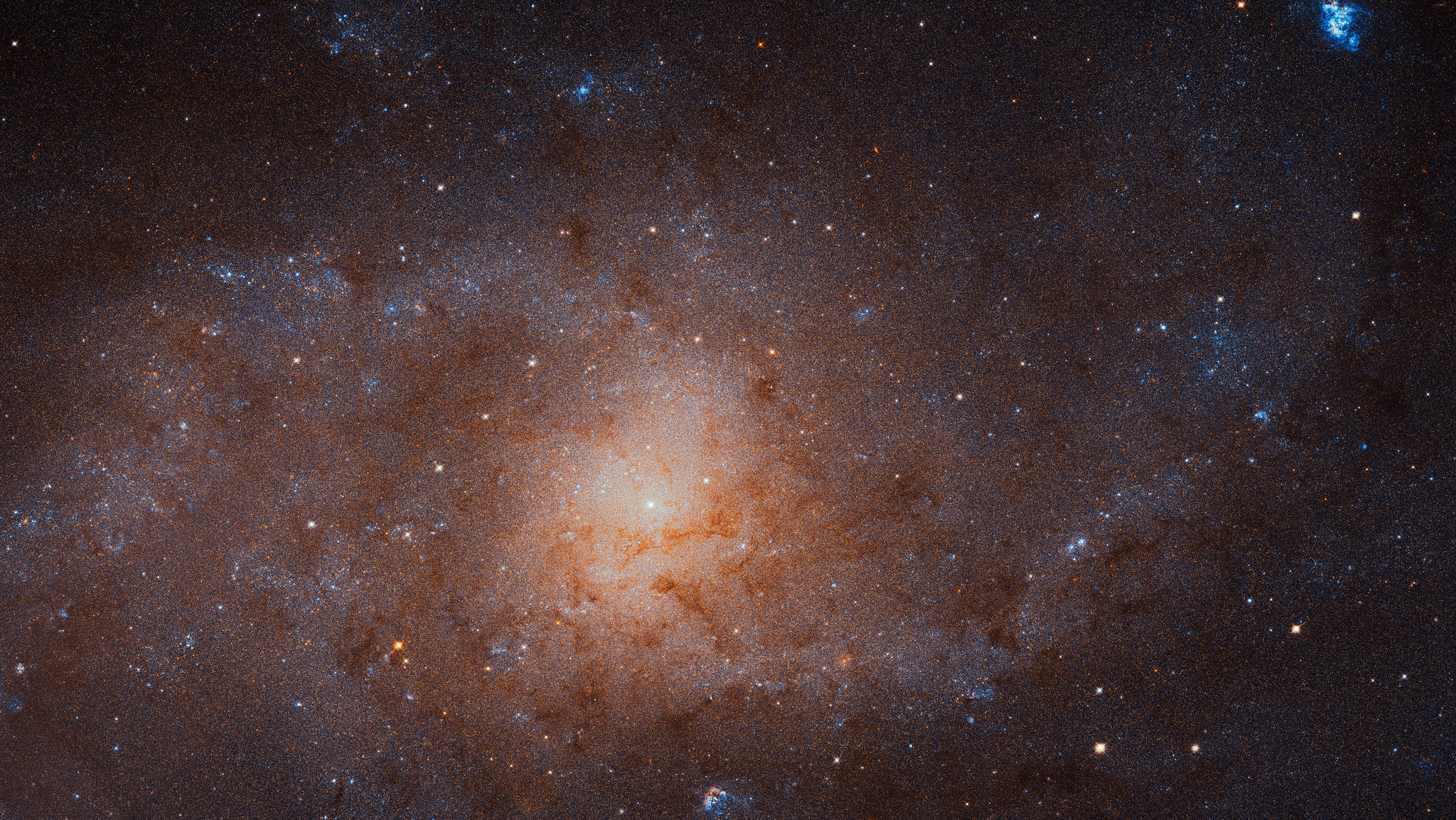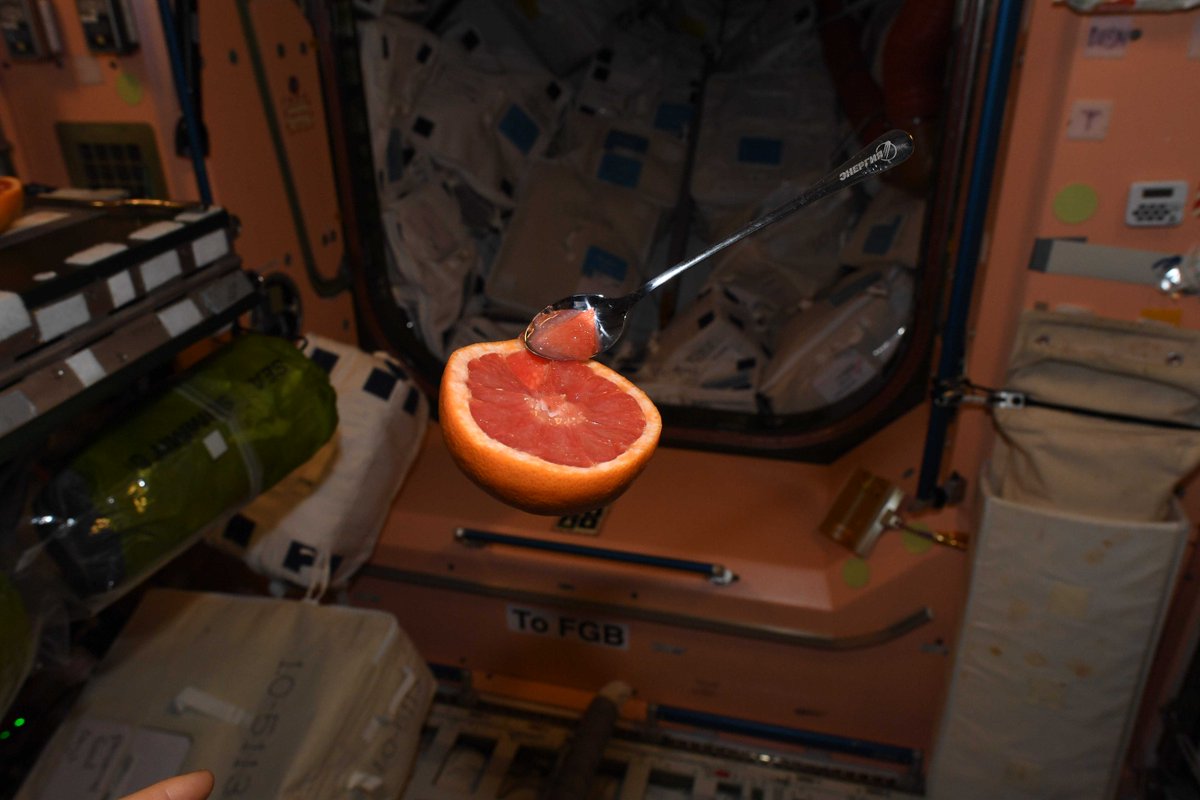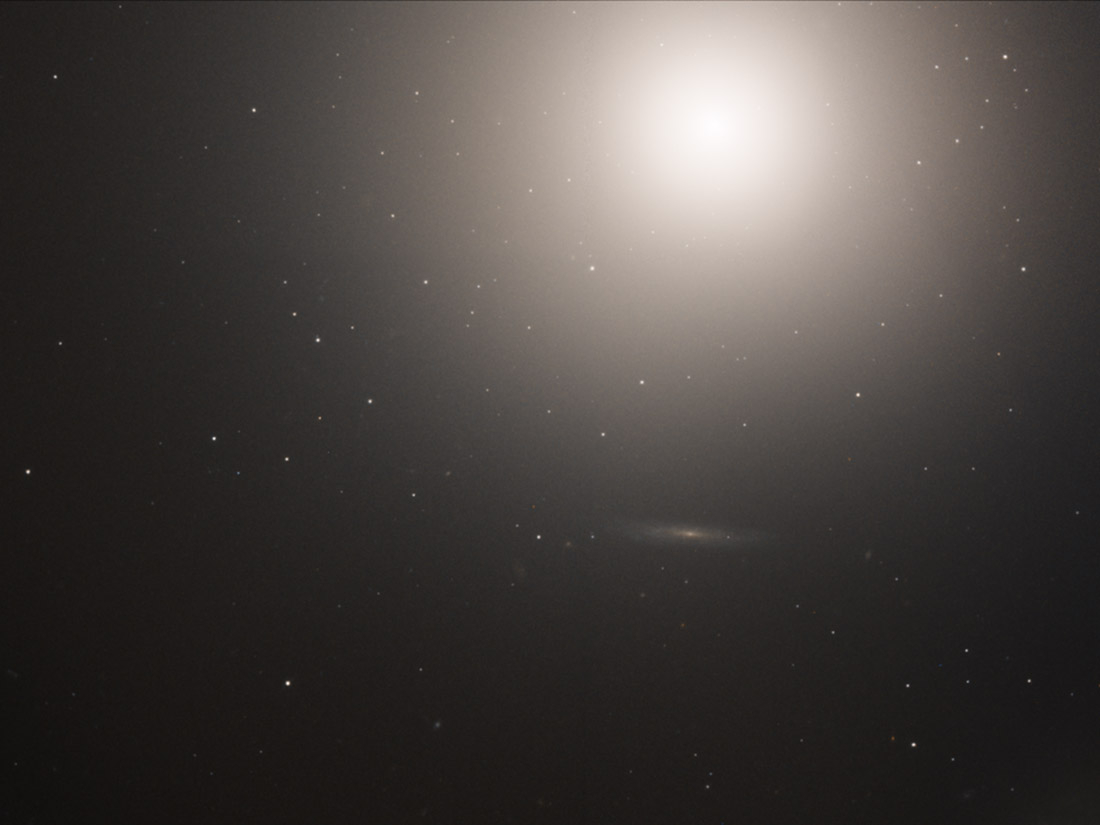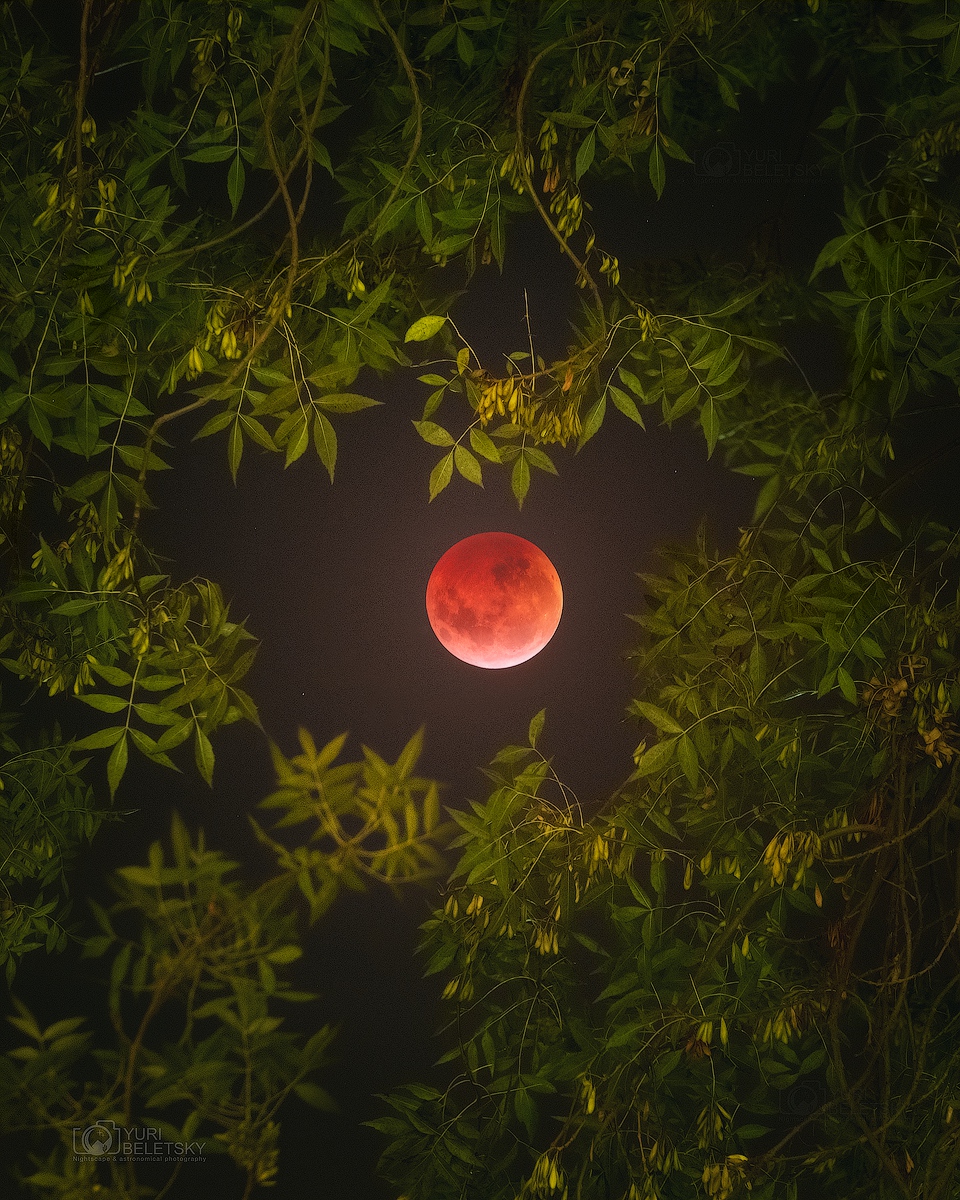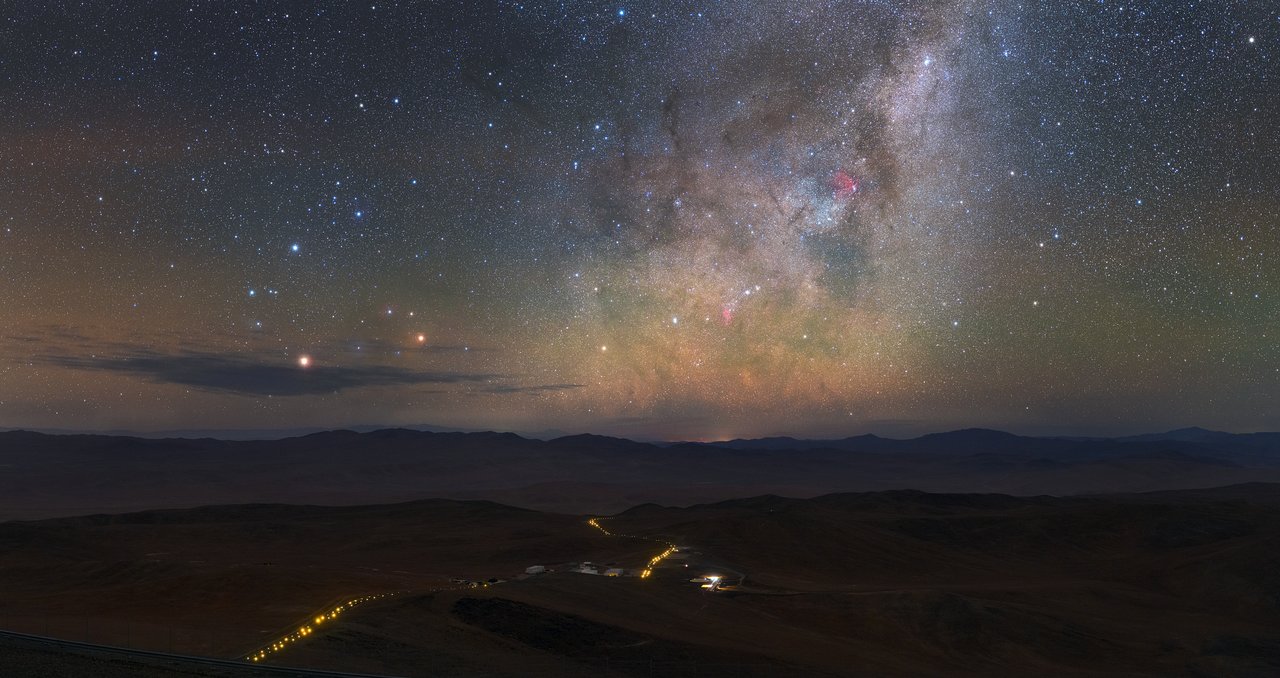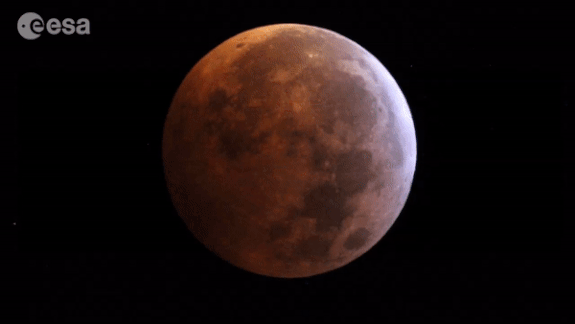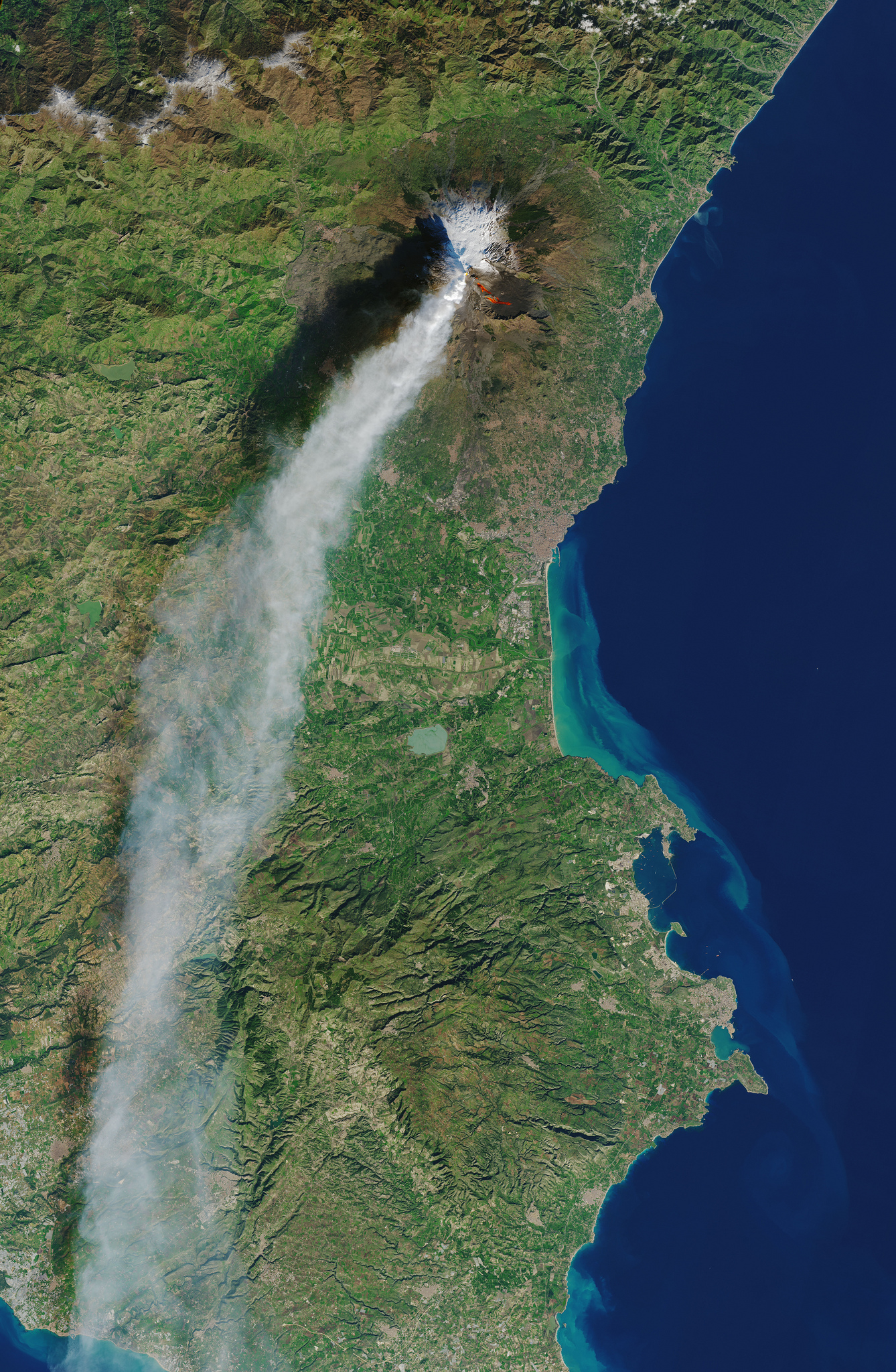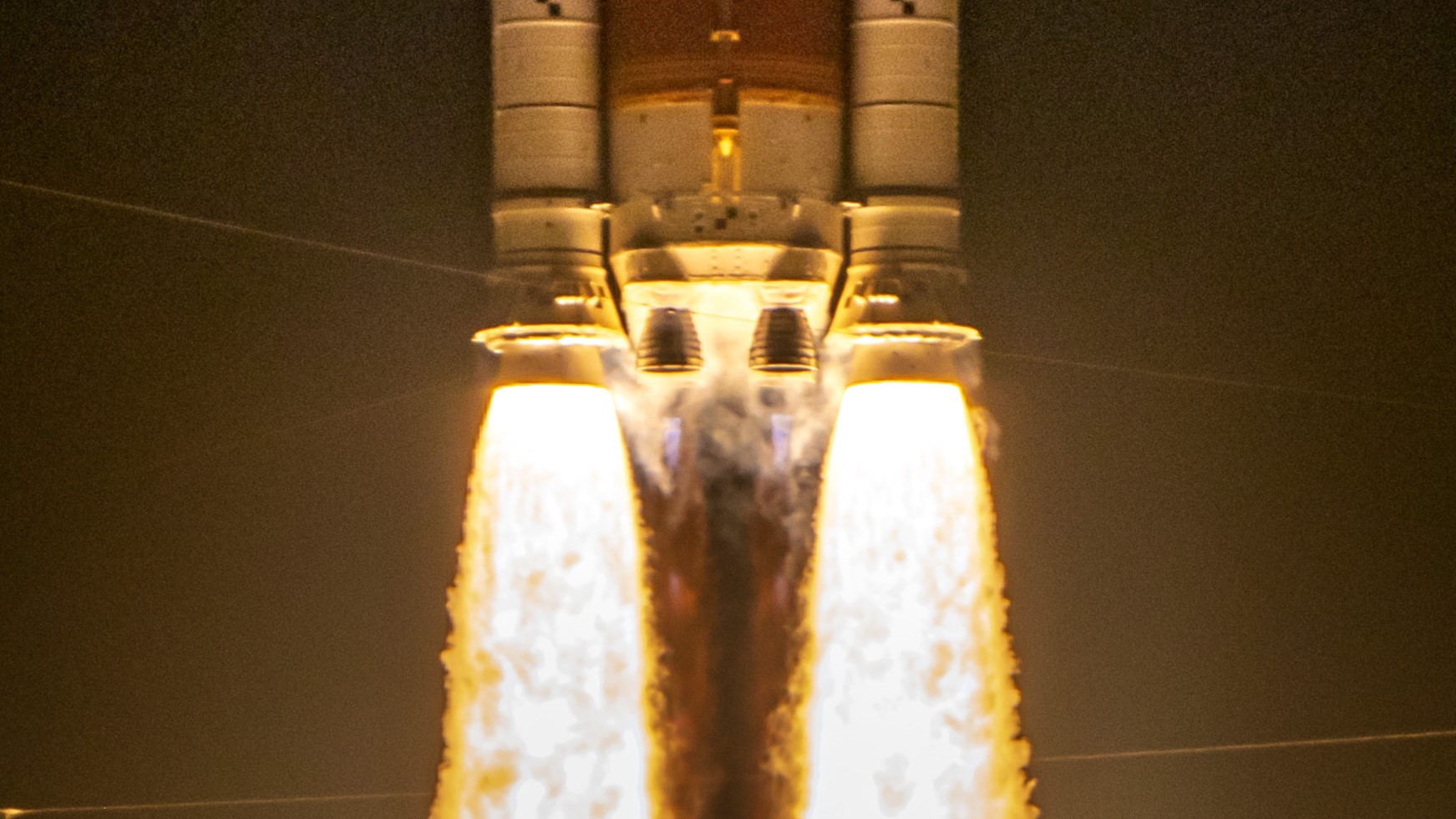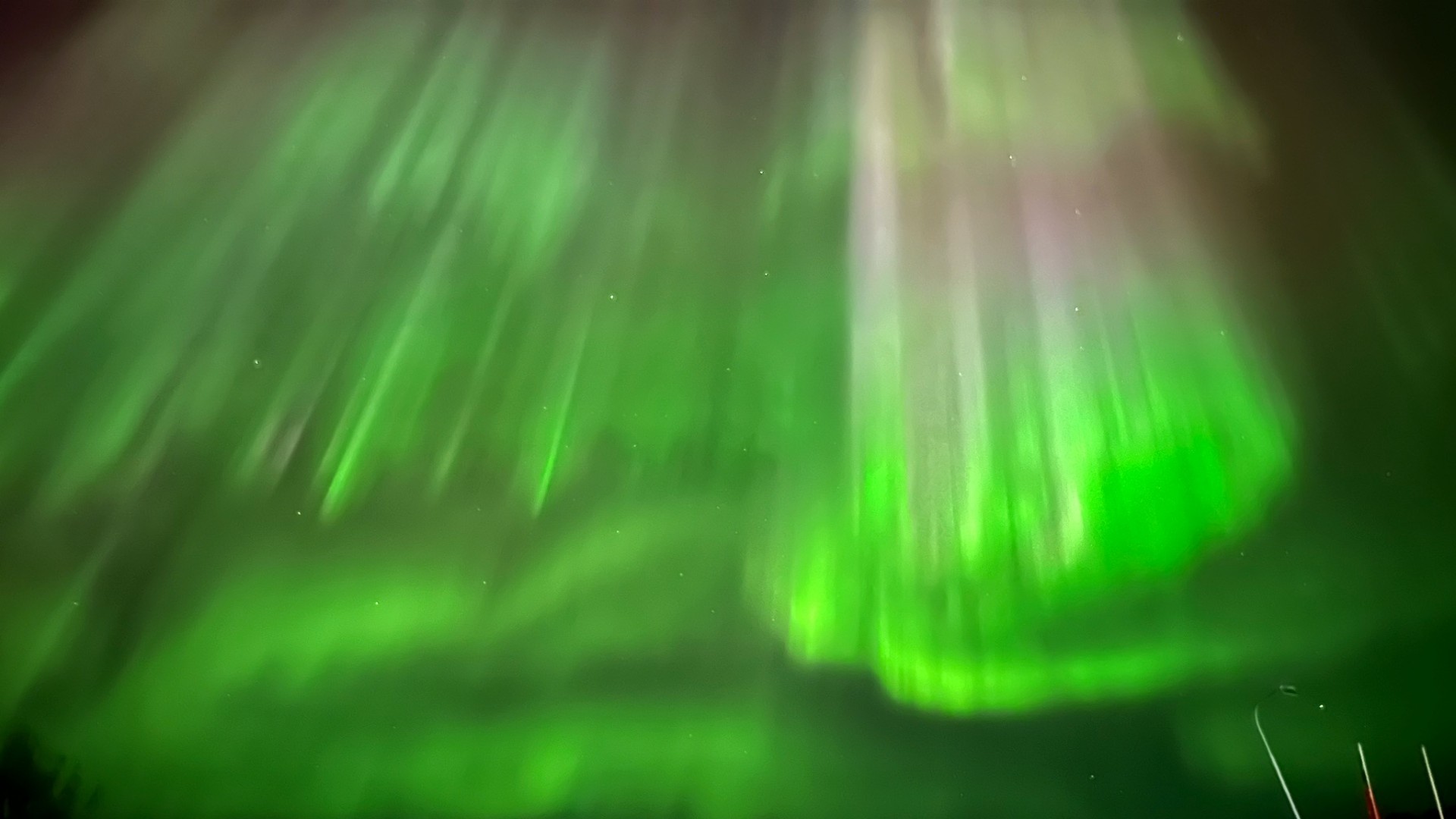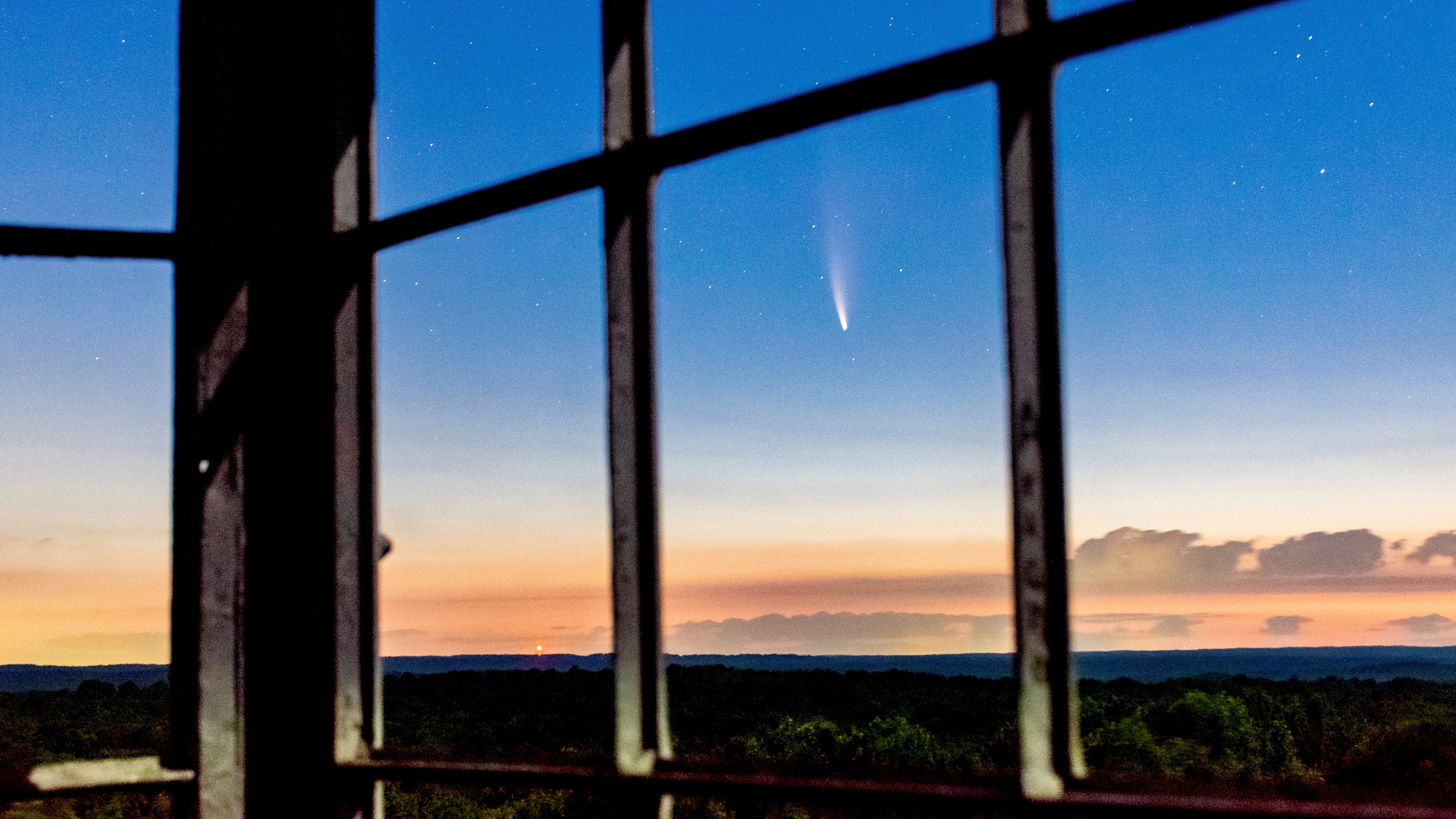Image of the Day 2019 Archive
Take a trip through time and space to explore all Space.com's Image of the Day photos from 2019!
January 2019
A star is born!
Tuesday, January 1, 2019: These blue splotches of interstellar dust and gas, lurking 1,000 light-years away in the constellation Perseus, are the "smoking gun" of a newborn star. Known as Herbig-Haro objects, these short-lived clouds form when ionized gas ejected from a newborn star collides with dust and gas in the surrounding nebula. The new star, named SVS 13, is located in the top left of this image from the Hubble Space Telescope. — Hanneke Weitering
Crescent Moon over NYC
Wednesday, January 2, 2019: A tiny sliver of the waxing crescent moon gleams over New York's Statue of Liberty in this photo taken by Rajat Pal. While the sun illuminates only a small portion of the Earth-facing side of the moon, the rest of the moon's face is faintly illuminated by light reflecting off the Earth's surface, a phenomenon known as Earthshine. Pal captured this photo of the one-day-old moon on Dec. 8, 2018. — Hanneke Weitering
So Long, MU69!
Thursday, January 3, 2019: NASA's New Horizons spacecraft captured this image of the Kuiper Belt object MU69, nicknamed "Ultima Thule," shortly after its close flyby on Jan. 1. At the time, New Horizons was about 92,457 miles (148,795 kilometers) away from the bilobed space rock. — Hanneke Weitering
Hello, Moon!
Friday, January 4, 2019: Behold: the far side of the moon! China's Chang'e 4 probe became the first spacecraft to successfully execute a soft landing on the far side of the moon on Wednesday (Jan. 2). The mission consists of both a lander and a rover, named Yutu 2, which is seen here driving off from the landing site. — Hanneke Weitering
Crew Dragon Emerges
Monday, January 7, 2019: A look at SpaceX's first Crew Dragon spacecraft attached to its Falcon 9 rocket as both sit inside their hangar at Launch Pad 39A of NASA's Kennedy Space Center in Cape Canaveral, Florida in January 2019. The rocket is set for its first uncrewed test flight this month. — Sarah Lewin Read more here.
Orion's Dragon
Tuesday, January 8, 2019: A 3D view of the Orion nebula taken by the flying SOFIA Observatory reveals the complex structures sculpted by the forming stars' powerful stellar wind. This slice, presented at the American Astronomical Society's winter meeting, is reminiscent of a dragon. — Sarah Lewin
Breaking space news, the latest updates on rocket launches, skywatching events and more!
On the Move
Wednesday, January 9, 2019: Europe's largest rover field test saw the self-driving SherpaTT rover exploring a Mars-like stretch of land in Morocco. The test was run by a team from Germany's DFKI Robotics Innovation Center. — Sarah Lewin
Earth, Moon and Bennu
Thursday, January 10, 2019: This snapshot from NASA's OSIRIS-REx probe on its way to asteroid Bennu shows the asteroid at the top right, but also a couple of more familiar specks in the bottom left: Earth and the moon! OSIRIS-REx captured this photo Dec. 19, 2018. — Sarah Lewin
Space Hippo!
Friday, January 11, 2019: This hippo-shaped near-Earth asteroid, called 2003 SD220, was spotted by NASA's Goldstone antenna, the Arecibo Observatory in Puerto Rico and the Green Bank Telescope in West Virginia. — Sarah Lewin
Future Home of the Cherenkov Telescope Array
Monday, January 14, 2019: Stars and galaxies twinkle above Chile's Atacama Desert while a satellite flare zips across the night sky in this image by Petr Horálek, a photo ambassador for the European Southern Observatory. The empty landscape below has been selected to be the future site for part of the Cherenkov Telescope Array, an international project that will search the cosmos for gamma radiation using an array of 99 telescopes located in both the Southern Hemisphere and Northern Hemisphere. — Hanneke Weitering
Storms on Jupiter
Tuesday, January 15, 2019: Three big storms churn through Jupiter's turbulent atmosphere in this image from NASA's Juno spacecraft. Citizen scientist Kevin Gill processed the image using data the spacecraft collected during a close flyby of the planet on Dec. 21, 2018. — Hanneke Weitering
The Triangulum Galaxy
Wednesday, January 16, 2019: Behold: the sharpest view of the Triangulum Galaxy ever! This composite image combines 54 frames captured by the Hubble Space Telescope's Advanced Camera for Surveys. Also known as Messier 33, the Triangulum Galaxy is located about 3 million light-years from Earth in the constellation of Triangulum. — Hanneke Weitering
A Grapefruit in Space
Thursday, January 17, 2019: A fresh grapefruit floats in microgravity at the International Space Station in this photo taken by Canadian astronaut David Saint-Jacques. "Enjoying the last few fresh items until the next resupply spacecraft," Saint-Jacques tweeted yesterday from the orbiting laboratory. The next cargo shipment is scheduled to launch in March on a SpaceX Dragon spacecraft, so he and his Expedition 58 crewmates will have to wait a few weeks before more fresh fruit arrives. — Hanneke Weitering
A Strangely Spherical Galaxy
Friday, January 18, 2019: The bright, fuzzy light in this deep-space image is a spherical collection of stars known as Messier 89. Although it's classified as an elliptical galaxy, Messier 89 appears to be almost perfectly spherical, which is highly unusual. However, astronomers suspect that Messier 89's peculiar shape could just be an illusion, or a product of both the galaxy's orientation and our point of view. — Hanneke Weitering
Martin Luther King, Jr. and the Supermoon
Monday, January 21, 2019: The first "supermoon" of 2019 arrived on the Martin Luther King Jr. holiday today, along with a "blood moon" lunar eclipse. In this photo, a previous supermoon sets behind the Martin Luther King Jr. Memorial in Washington on Nov. 14, 2016. That supermoon did not coincide with a lunar eclipse, but it was the closest encounter between Earth and the moon in more than 68 years. See AMAZING photos of the 2019 Blood Moon! — Hanneke Weitering
Total Lunar Eclipse Over Chile
Tuesday, January 22, 2019: The Super Blood Wolf Moon peeks out from behind some foliage in this image taken by astrophotographer Yuri Beletsky in Santiago, Chile. Although the temperature in Chile was more bearable than it was for many eclipse photographers facing a cold front in the U.S., Beletsky said he struggled with thick cloud coverage throughout his shoot. He captured this lucky shot through a break in the clouds. — Hanneke Weitering
Chile's Vibrant Night Sky
Wednesday, January 23, 2019: The Milky Way shimmers over Chile's Atacama Desert in this stunning view by astrophotographer Petr Horálek of the European Southern Observatory (ESO). The long line of yellow street lights marks the road between ESO's Paranal Observatory and the Residencia, a hotel that provides lodging for astronomers and other staff of the observatory. — Hanneke Weitering
Aurora Spotted from Space
Thursday, January 24, 2019: A lime-green aurora glows above Earth's city lights in this view from the International Space Station. At the time this photo was taken, the space station was orbiting about 258 miles (415 kilometers) above Russia and the Ukraine. A portion of the space station's solar array is visible in the top left corner of the image. — Hanneke Weitering
Blood Moon 'Eclipses' a Star
Friday, January 25, 2019: During the total lunar eclipse on Monday (Jan. 21), the moon temporarily blocked our view of the star HIP 39749, located almost 6,000 light-years away in the Cancer constellation. In this animated timelapse, you can see the star emerging from the bottom of the moon after this stellar occultation. Astronomers at the European Space Astronomy Center in Spain recorded the event using an 8-inch (20-centimeter) reflector scope. — Hanneke Weitering
365 Days of Sunshine
Monday, January 28, 2019: This solar montage shows what our sun looked like on every day of the year in 2018, as seen by the European Space Agency's Proba-2 satellite. During 2018, the sun was at the minimum of its 11-year solar cycle, so there weren't a ton of sunspots and solar flares to observe. Proba-2 captured these images using a camera called SWAP, which stands for Sun Watcher using Active Pixel System detector and Image Processing. (You can see an animation of all the images here.) — Hanneke Weitering
Blue Dunes on Mars
Tuesday, January 29, 2019: Eerie blue sand dunes ripple across the Martian terrain in this image from the HiRISE camera aboard NASA's Mars Reconnaissance Orbiter. This dune field displays sandy features that can take on a variety of different shapes, depending on factors like wind velocity and the amount of sand present. "The dunes are arranged in a linear fashion at the northern extent of the field, first in areas with lots of sand, and then with relatively sand-free patches in between dune crests," NASA officials said in an image release. — Hanneke Weitering
Epic Winter Storm Seen from Space
Wednesday, January 30, 2019: As a dangerously cold rush of air is sweeping across the Midwest United States today, the National Oceanic and Atmospheric Administration's GOES-East satellite is keeping an eye on the record-breaking weather event from space. This surge of cold air is the result of a rift in the polar vortex, a circulation of winds that surround the North Pole. — Hanneke Weitering
Mount Etna Eruption Seen from Space
Thursday, January 31, 2019: NASA's Earth-observing satellite Landsat 8 captured this remarkable view of a "flank eruption" of Mount Etna. This type of eruption occurs when lava flows out of the side of a volcano rather than the top. Mount Etna erupted on Christmas Eve (Dec. 24, 2018), and Landsat 8 captured this image four days later as lava continued to flow. — Hanneke Weitering
Can't find the date you're looking for? It may have been a weekend or holiday, when we don't normally update our Image of the Day.
Click 'NEXT PAGE' below for February >
Image of the Day Archives
Image of the Day 2024 Archive
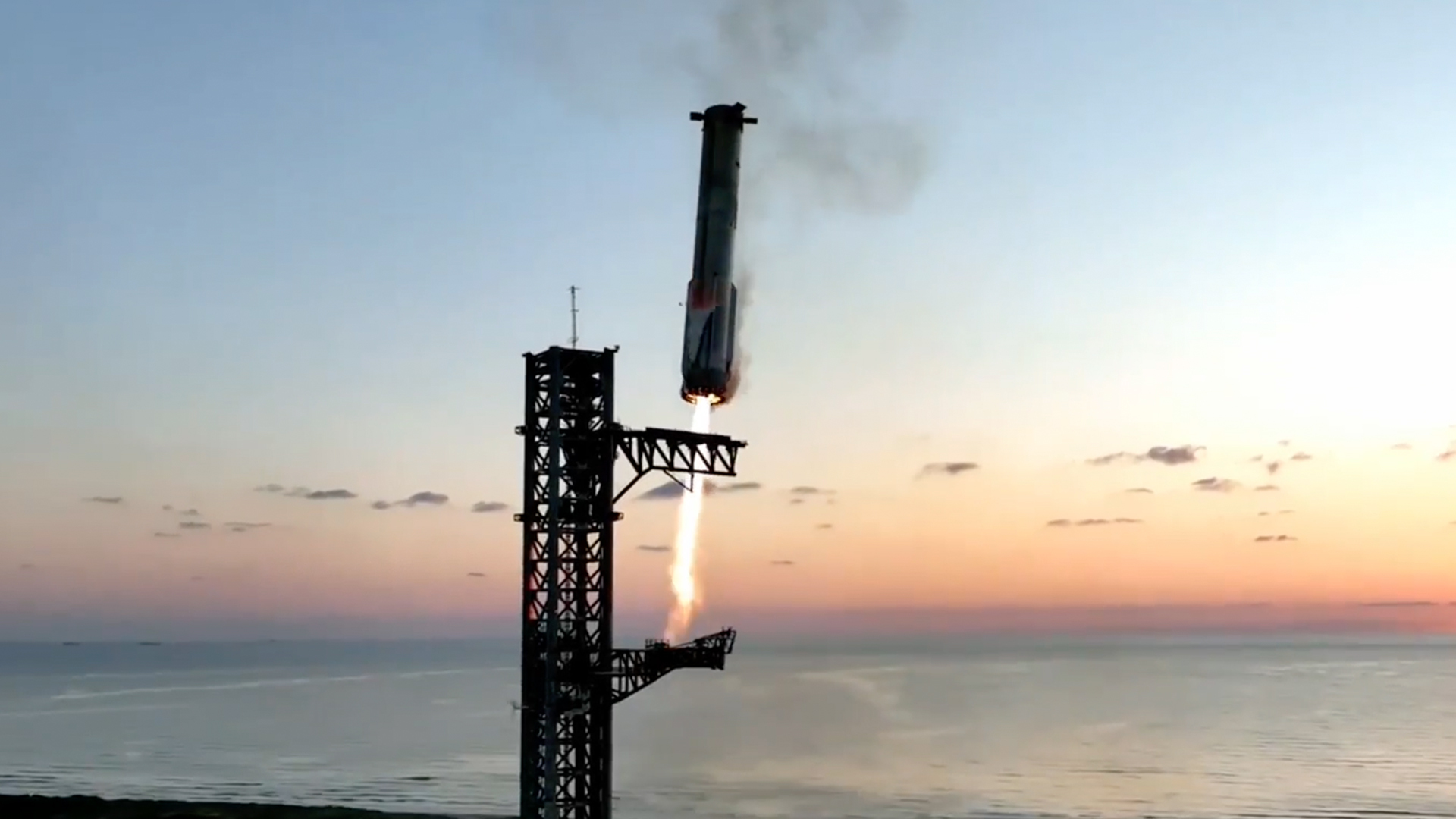
Image of the Day 2023 Archive
Image of the Day 2022 Archive
Image of the Day 2021 Archive
Image of the Day 2020 Archive
Image of the Day 2019 Archive

Space.com is the premier source of space exploration, innovation and astronomy news, chronicling (and celebrating) humanity's ongoing expansion across the final frontier. Originally founded in 1999, Space.com is, and always has been, the passion of writers and editors who are space fans and also trained journalists. Our current news team consists of Editor-in-Chief Tariq Malik; Editor Hanneke Weitering, Senior Space Writer Mike Wall; Senior Writer Meghan Bartels; Senior Writer Chelsea Gohd, Senior Writer Tereza Pultarova and Staff Writer Alexander Cox, focusing on e-commerce. Senior Producer Steve Spaleta oversees our space videos, with Diana Whitcroft as our Social Media Editor.
